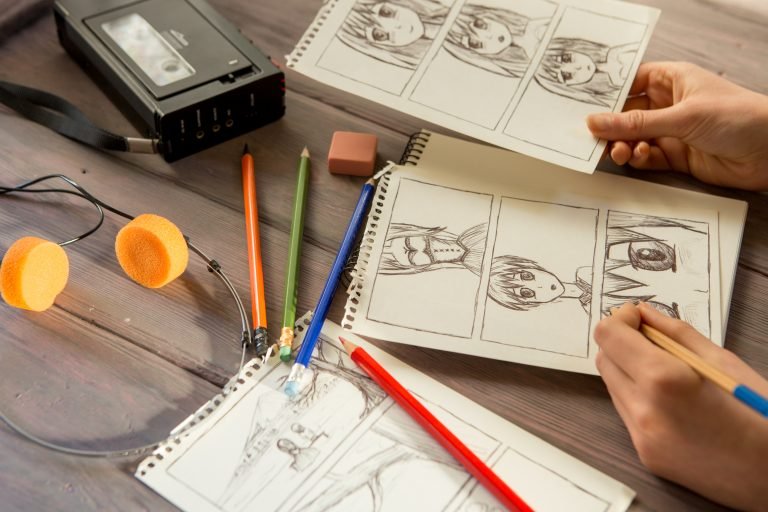The comic book industry is an exciting field, offering endless opportunities for artists to showcase their creativity. However, breaking into this competitive world requires more than just artistic talent. It demands persistence, networking, and strategic planning. Here’s a step-by-step guide to help you kickstart your journey as a comic book artist.
1. Master the Basics of Comic Art
To succeed, you need to hone your skills and understand the essentials of comic creation.
- Learn Anatomy and Perspective: Strong character anatomy and dynamic perspectives are the foundation of comic art. Practice drawing human figures, facial expressions, and action poses.
- Study Panel Composition: Learn how to create engaging layouts that guide the reader’s eye seamlessly through the story.
- Experiment with Styles: Develop a unique art style that reflects your personality while meeting industry standards.
2. Build a Diverse Portfolio
Your portfolio is your ticket into the industry, so make it count.
- Showcase Variety: Include character designs, dynamic action scenes, detailed backgrounds, and emotional expressions.
- Tell Stories: Create short comic sequences to demonstrate your storytelling ability. Editors look for artists who can bring scripts to life.
- Keep It Concise: A strong portfolio with 10–15 standout pieces is more effective than one with filler work.
3. Network Within the Industry
Building relationships with professionals can open doors to opportunities.
- Attend Comic Cons and Events: Meet publishers, editors, and fellow artists at conventions. Bring copies of your portfolio and business cards.
- Engage Online: Use platforms like Twitter, Instagram, and LinkedIn to connect with industry professionals and share your work.
- Join Communities: Participate in forums, Discord groups, or workshops dedicated to comic book artists.
4. Collaborate on Independent Projects
Starting small can help you gain experience and build a name.
- Work with Writers: Collaborate on webcomics, zines, or indie comic projects. These partnerships can help you gain exposure.
- Self-Publish: Create and sell your own comics through platforms like Kickstarter or Gumroad. This showcases your ability to complete projects.
- Freelance: Offer your services for cover art, character designs, or storyboards to build your resume.
5. Pitch to Publishers
Once you’ve built your skills and network, it’s time to approach publishers.
- Research Companies: Study the style and genres of different publishers to find the best fit for your work.
- Follow Submission Guidelines: Check each publisher’s website for specific instructions on submitting your portfolio.
- Be Persistent: Rejection is common in this field. Use feedback to improve and keep submitting.
6. Leverage Social Media and Web Platforms
In the digital age, an online presence is crucial.
- Showcase Your Work: Post your art regularly on platforms like Instagram, Twitter, and DeviantArt.
- Build a Website: Create a professional portfolio website with a contact form for potential clients.
- Engage With Fans: Interact with your followers to build a supportive audience for your work.

7. Stay Updated and Adaptable
The comic book industry evolves constantly, so staying informed is essential.
- Follow Trends: Keep an eye on emerging genres, styles, and technologies in comic art.
- Learn Digital Tools: Master software like Photoshop, Clip Studio Paint, or Procreate for digital comic creation.
- Keep Improving: Take online courses, read art books, and seek constructive criticism to refine your craft.
Conclusion
Breaking into the comic book industry as an artist is a journey that requires dedication, resilience, and passion. By mastering your craft, building connections, and showcasing your work, you can carve a path to success. Remember, every artist’s journey is unique—stay persistent, and your hard work will pay off.











